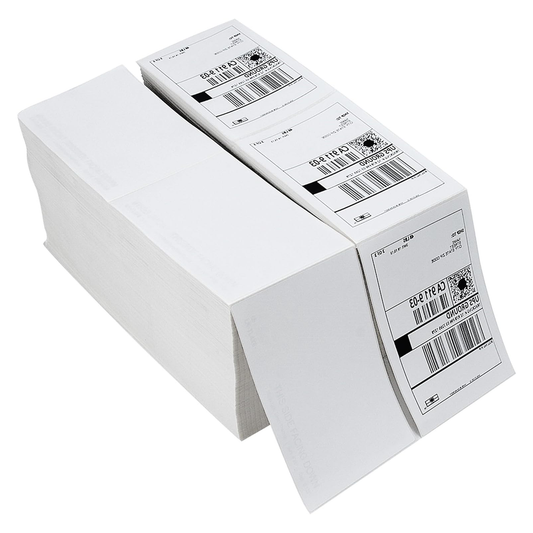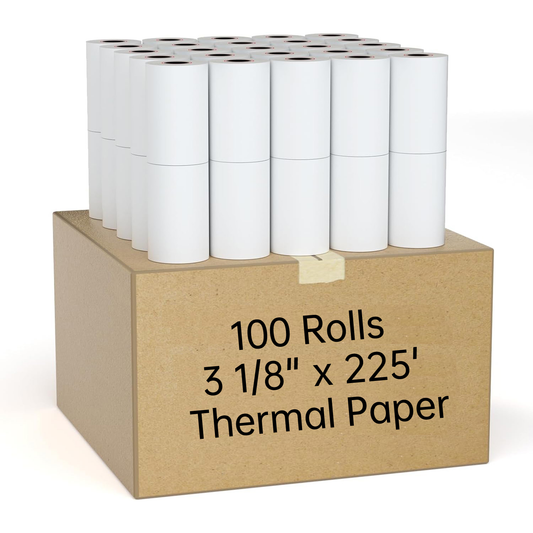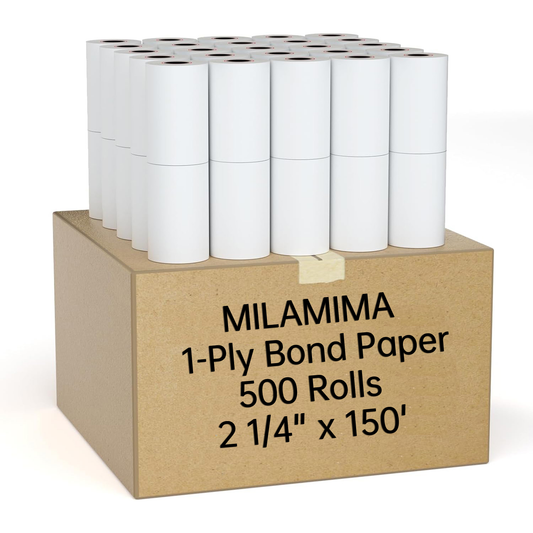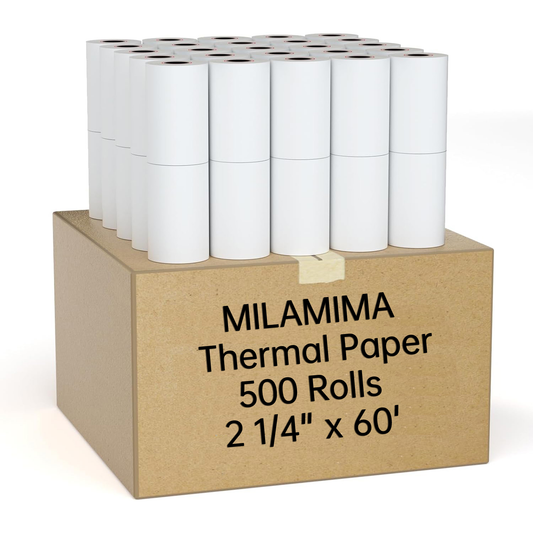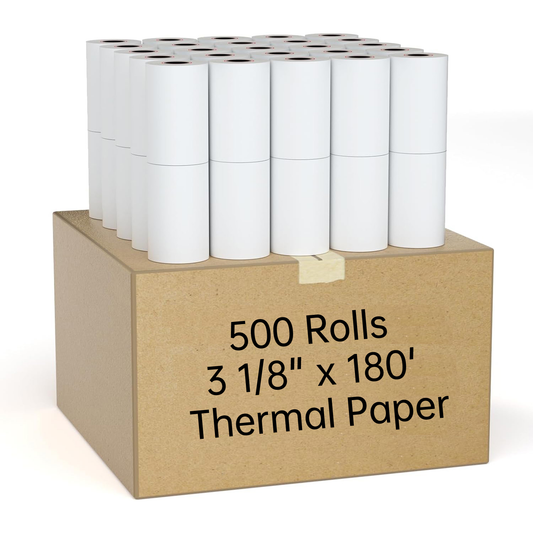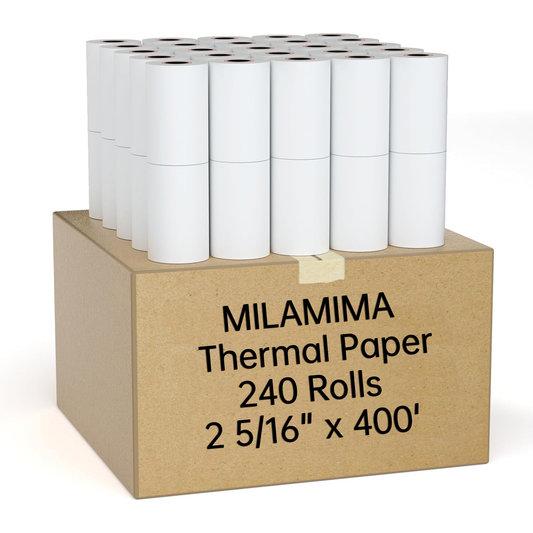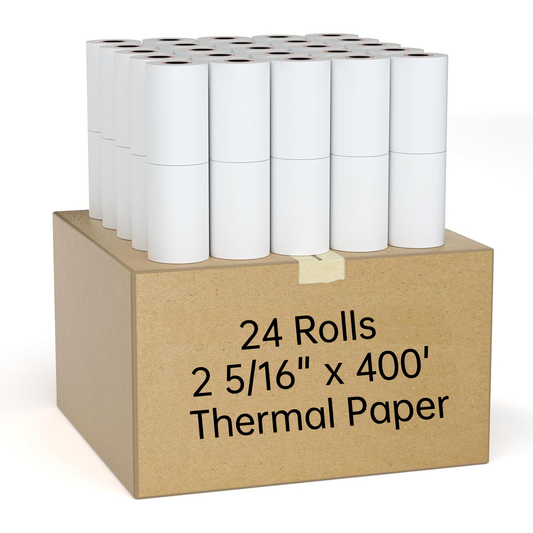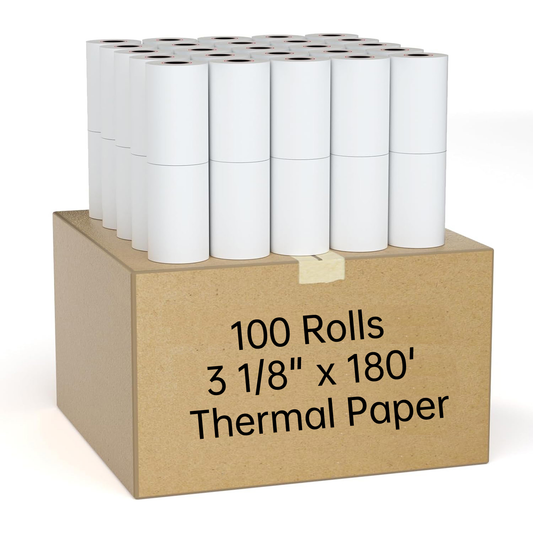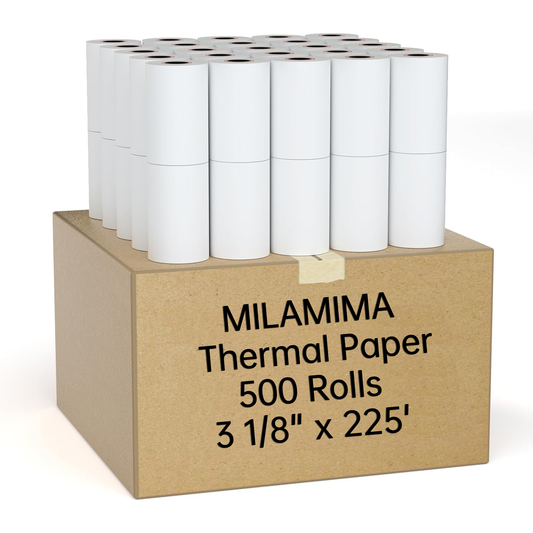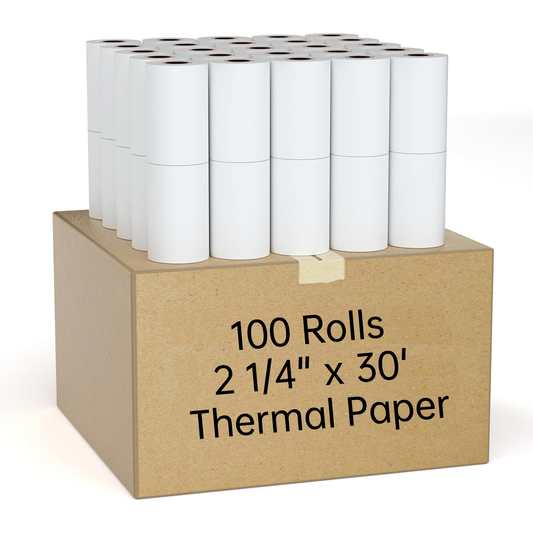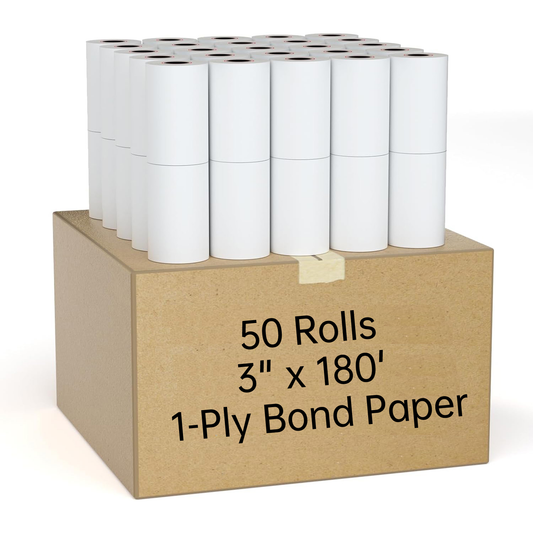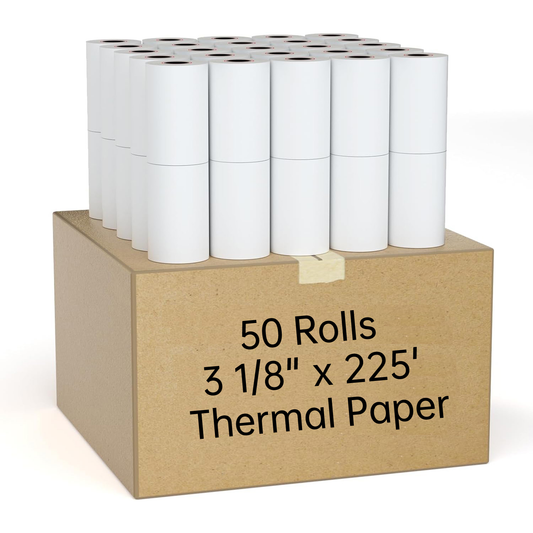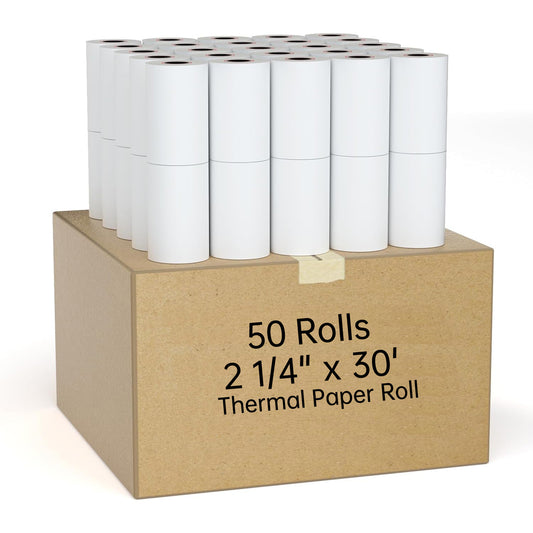In today's fast-paced business environment, choosing the right type of receipt paper is crucial for efficiency and customer satisfaction. With digitalization transforming payment processes, understanding the differences between thermal paper and traditional receipt paper is more important than ever. In this blog, we'll explore these differences, highlighting their unique features and benefits.
Thermal Paper
Thermal paper is widely used in point-of-sale (POS) systems due to its convenience and efficiency. This paper is coated with a mixture of chemicals and dyes that react to heat, allowing printers to create text and images without the need for ink or ribbons. Here are the key characteristics of thermal paper:
- Paper Surface Color: Typically, thermal paper is white. When exposed to heat, it turns black to create images or text.
- Coating: It has several layers of chemical coatings that create a smooth and bright surface. These layers are heat-sensitive and produce images through a thermochromic reaction.
- Ribbons: Unlike traditional receipt paper, thermal paper does not require printing ribbons. It relies on heat to generate images, making it more convenient and less costly in terms of supplies.
- Print-out Image Color: The text or images on thermal paper usually appear in black or blue due to the heat-sensitive chemicals.
Carbonless Receipt Paper
Carbonless receipt paper, also known as NCR (No Carbon Required) paper, is used to create multiple copies of a receipt in one go. It is commonly used in situations where duplicate copies are needed, such as in invoices and order forms. Here’s what sets carbonless paper apart:
- Paper Surface Color: Carbonless paper comes in various colors, including white, pink, and canary.
- Coating: This paper is coated with micro-encapsulated ink or dye. When pressure is applied, it transfers the image from the top sheet to the subsequent sheets.
- Ribbons: Traditional printing ribbons are used to provide high-quality prints on the top sheet, which then transfers the image to the sheets below through pressure.
- Print-out Image Color: The first sheet has dye pigments that, when pressure is applied, create a replica of the topmost sheet on the second and third layers.
Common Uses and Benefits
Thermal Paper:
- Lower Maintenance Cost: Thermal printers have fewer moving parts, requiring less maintenance and repair.
- Minimal Running Cost: No need for ink cartridges or ribbons, as images are printed through heated printer pins.
- Faster Print Speed: Capable of producing text and images quickly, ideal for high-traffic retail environments.
- Adaptability: High-quality images and text are produced efficiently, making it popular across various industries.
Carbonless Paper:
- Multiple Copies: Ideal for creating duplicate or triplicate copies without the need for carbon paper.
- Versatility: Used in various printers, including laser printers, and suitable for invoices, order forms, and other multi-copy documents.
Conclusion
Choosing the right type of receipt paper depends on your business needs. Thermal paper offers efficiency and cost savings, especially in high-volume retail settings, while carbonless paper provides the benefit of creating multiple copies with ease. At Graphic Tickets & Systems, we specialize in providing high-quality thermal and carbonless receipt papers tailored to your specific requirements.
Whether you're looking for thermal paper for your POS system or carbonless paper for multi-copy forms, our experienced professionals are here to help you select the best option for your business.
Explore our comprehensive guide on thermal paper types and find the perfect match for your business needs.


